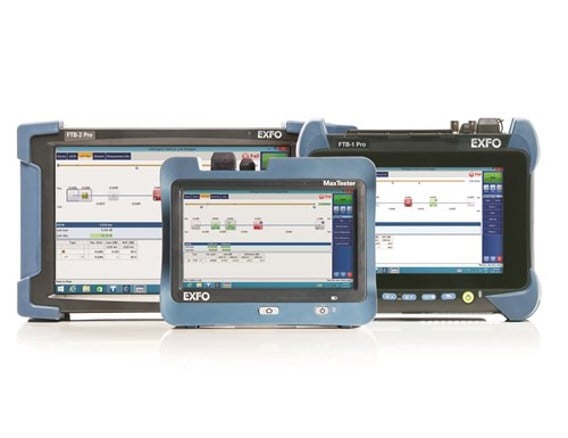


Key features

Applications
Description
Loaded with features to boost your effifiency
Real-time averaging
Activates the OTDR laser in continuous shooting mode, the trace refreshes in real time and allows to monitor the fiber for a sudden change. Perfect for a quick overview of the fiber under test.
Automode
Used as a discovery mode, this feature automatically adjusts the distance range and the pulse width in function of the link under test. It is recommended to adjust the parameters to perform additional measurements to locate other events.
Zoom tools
Zoom and center to facilitate the analysis of your fibers. Draw a window around the area of interest and center in the screen quicker.
Set parameters on the fly
Dynamically change OTDR settings for the ongoing acquisition without stopping or returning to submenus.
Macrobend finder
This built-in feature enables the unit to automatically locate and identify macrobends, no need to spend further time analyzing the traces.
Bidirectional analysis (via FastReporter2 data post-processing software)
Recommended to ensure true splice characterization, bidirectional analysis combines results from both directions to provide an average loss for each event. For a more complete event characterization, use iOLM and benefit from maximum resolution on both directions (multiple pulse widths at multiple wavelengths) as well as a consolidated view.
Data center cable certification (iCERT1)
iCERT option turns the iOLM into an intelligent Tier-2 certifier with automated pass/fail thresholds for SM/MM cables, helping fiber installers to certify or troubleshoot any enterprise or datacenter network according to the recognized international standards (including TIA-568, ISO 11801).
Data center cable certification (iCERT1)
Linear-view (included on all EXFO OTDRs)
Available on our OTDRs since 2006, the linear view simplifies the reading of an OTDR trace by displaying icons in a linear way for each wavelength. It converts the graph data points you obtain from a traditional single pulse trace into reflective or non-reflective icons. With applied pass/fail thresholds, it becomes easier to pinpoint faults on you link.
This improved version of linear view provides flexibility to display both the OTDR graph with its linear view without the need to toggle to analyze your fiber link.
Even though it simplifies the OTDR reading of a single pulse width’s trace, the user still needs to set OTDR parameters. Additionally, it is often required to perform multiple traces to fully characterize fiber links. See how the iOLM can perform this automatically and with more accurate results.


